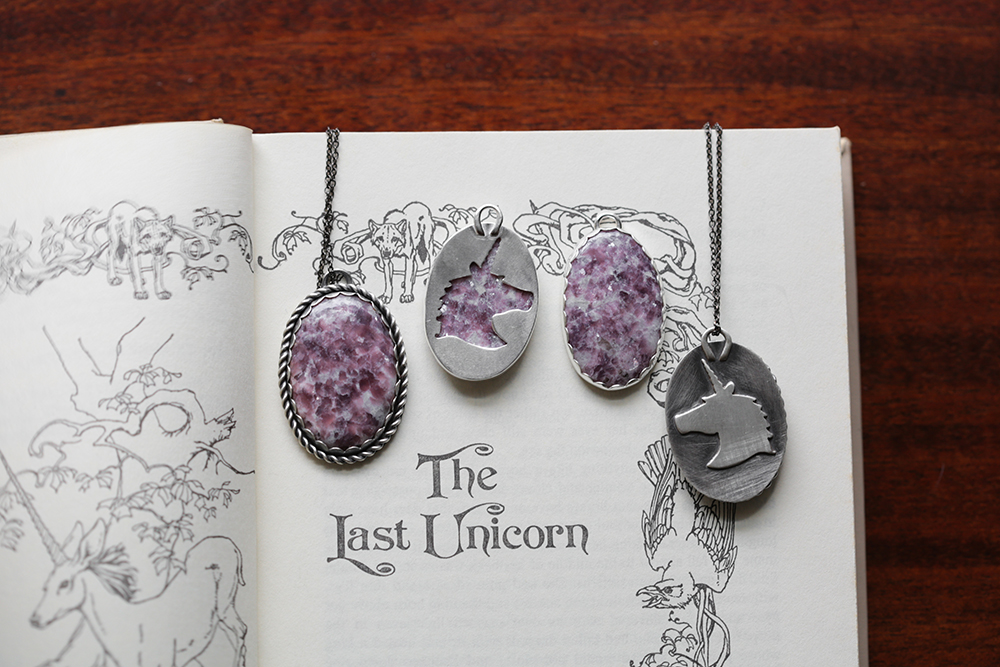
There are a few beloved books to which I continually return. On dreary or blustery days, I will wander down to my bookshelves just to hold these particular books. I run my fingers along their spines, let them fall open in my hands hoping to alight upon a favorite passage. And then, sometimes, the most special of these books will get tucked under my arm and whisked up the stairs for a reread. And one such book, is The Last Unicorn by Peter Beagle.
Distilled to its very basic plotline, this book is about a unicorn who discovers she may be the last of her kind, so she leaves the protection of her wood to search for others. She knows nothing of the outside world, and encounters magicians, bandits, a cruel travelling carnival, an evil king, cursed villages, a questing prince, and so on. Eventually, she discovers the fate of her kin and the terrible creature determined to destroy the last of the unicorns.
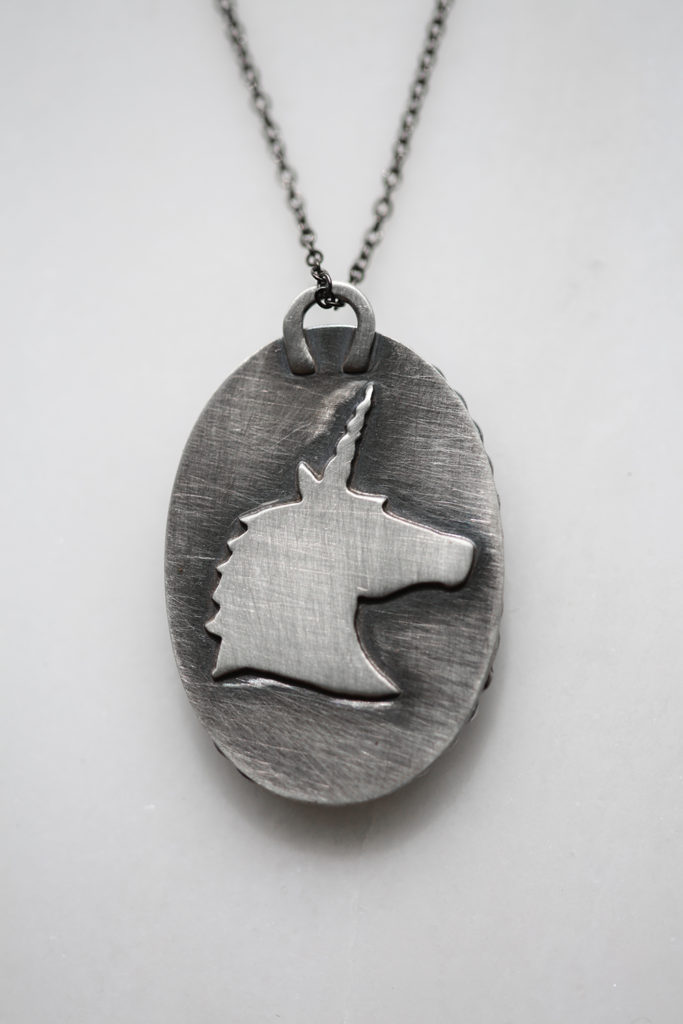
I first read it much too young to bother with its more sophisticated qualities. But even upon that first reading, this book strummed a deep and vital chord in me. When reading it, one gets a sense of something eternal, strange, and beautiful. It didn’t matter that I missed all the undercurrents and even much of the plot (my information retention between the ages of 9-12 was spotty at best, I think), because the book drips with color and poetry. I could sense its quality even though being viewed from the shallow distances and sharp angles of young eyes.
I then found this book again as an adult, and was utterly swept up in it. I cannot say it is a perfect book, the arch of the book is wobbly and too convenient at times, the narrative too on the nose for it’s self-referential eye-winking to feel seamless. But the magic Beagle does work is perfect.
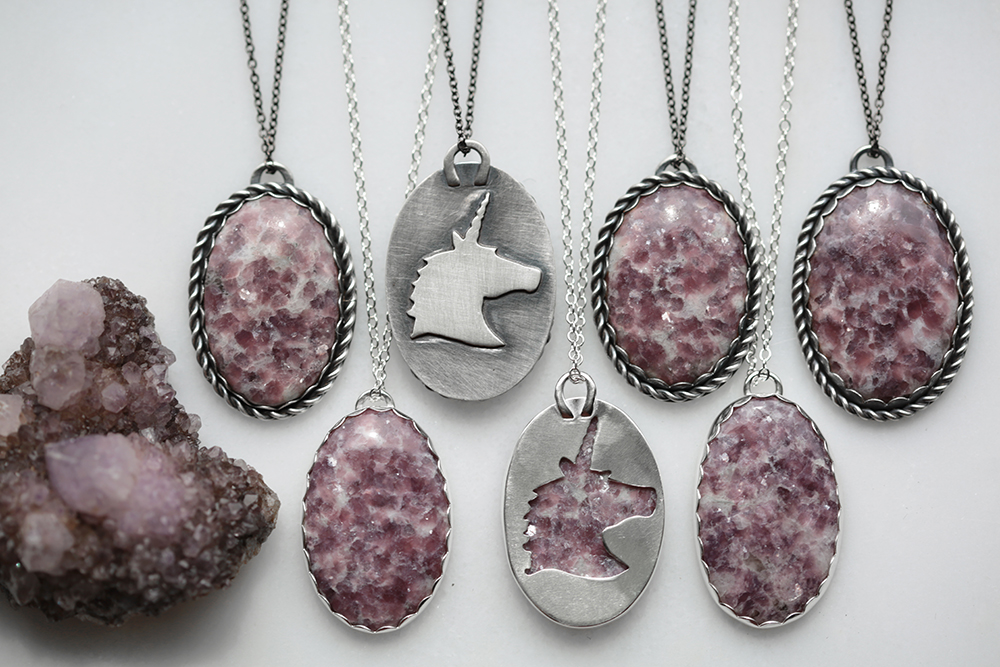
Through this book, Beagle walks around the concept of myth and belief, observes her from flank to nose, runs his hands along her back, draws her mane back from her eyes, and calls her by her name. At times, characters see what they wish to see, as with the townspeople visiting the travelling menagerie of mythical creatures and are unable to see them as the ordinary animals they truly are. And at other times, characters are only able to see what they expect to see, as when a farmer captures the unicorn and can only see her as an ordinary mare.
This book explores the beauty of wonder and the sorrow that comes with learning difficult truths, which renders fairytale, idealism, and faith so important. The furtive unicorn, the love of an ideal woman, the intrinsic quality of a hero, these are things that are mythic and unknowable, and it is precisely this distance that allows for a suspended state of wonder.
“Men have to have heroes, but no man can ever be as big as the need, and so a legend grows around a grain of truth, like a pearl.”
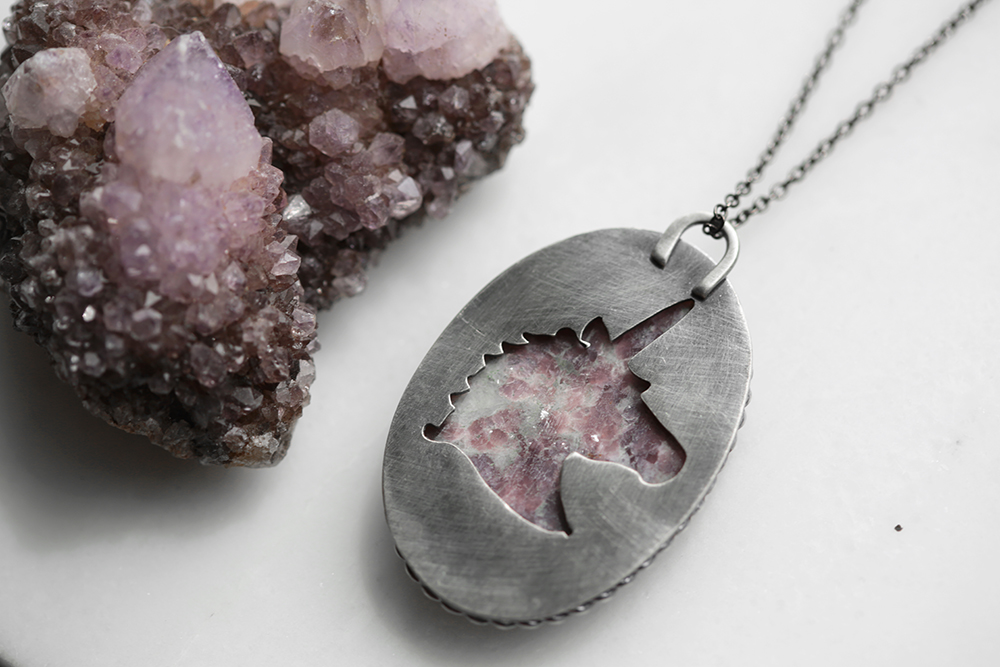
Long have I wanted to create something in honor of The Last Unicorn. The delicious descriptions still float around me as I move through the days. I can hear “honey and gunpowder on the air” when certain women speak. I remember that “whatever can die is beautiful” as I consider small broken bodies on the forest floor. I compare proclamations of adoration in films and other books to that of Prince Lir’s: “I would enter your sleep if I could, and guard you there, and slay the thing that hounds you, as I would if it had the courage to face me in fair daylight. But I cannot come in unless you dream of me.” Has there ever been a more beautiful plea of love? I doubt it. Except perhaps for that of Beagle’s butterfly who has clearly read Cyrano de Bergerac: “Your name is a golden bell hung in my heart. I would break my body to pieces to call you once by your name.” The exquisiteness of this book slays me.
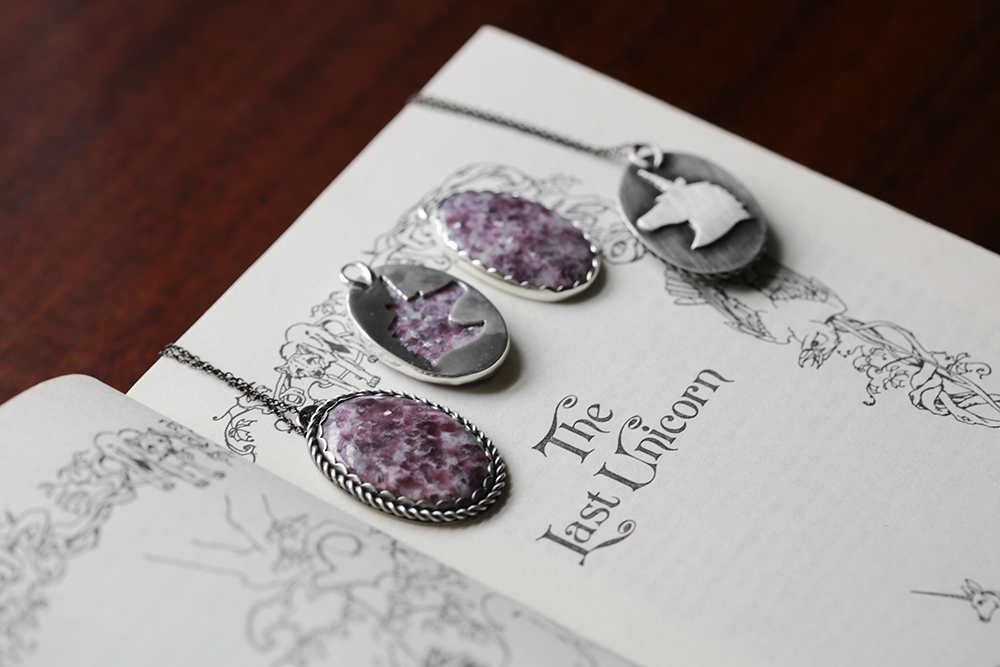
And so to honor it, the Amalthea Collection, named after the unicorn once transformed into a woman, the earthly embodiment of something unattainable and perfect. I based this piece around the opening lines of the book, which I still hear in my mind when the lilacs are in bloom.
“The unicorn lived in a lilac wood, and she lived all alone. She was very old, though she did not know it, and she was no longer the careless color of sea foam but rather the color of snow falling on a moonlit night. But her eyes were still clear and unwearied, and she still moved like a shadow on the sea.”
When I first read this in 5th or 6th grade, I mistook the first line. I didn’t imagine a grove of lilacs, as is the more obvious reading. I imagined a deep, dark wood with violet-colored leaves. I imagined lavender-tinted sunlight dappling a snow-white mane. And ever since I discovered lepidolite, it has been this first line of my beloved book that sauntered around in my mind.
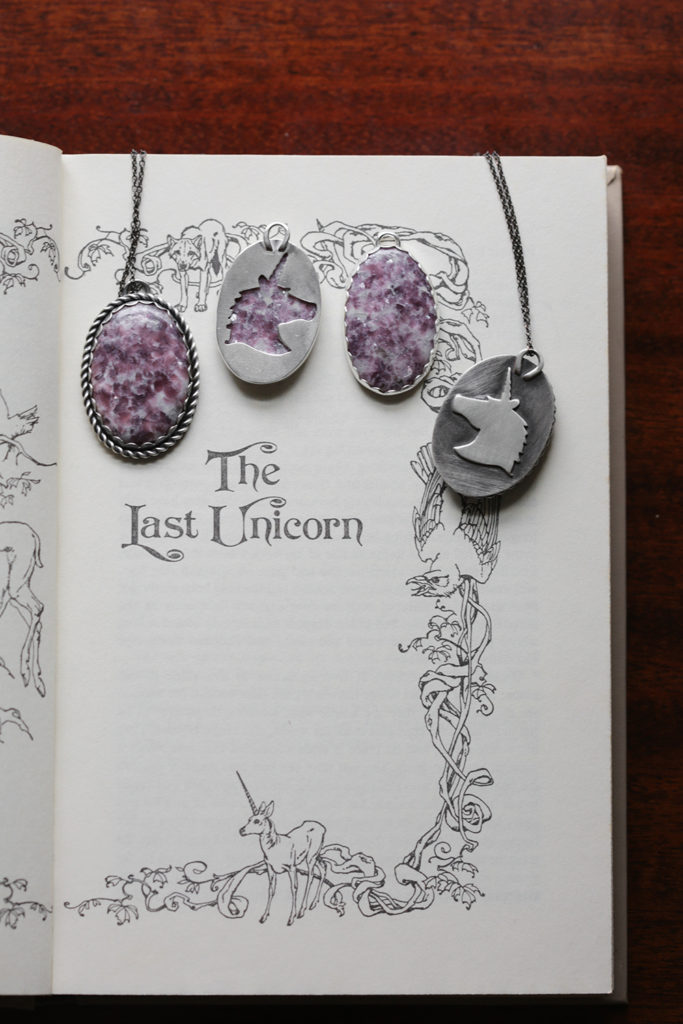
Lepidolite is comprised of lilac colored mica slivers amongst snowy white quartz, and these have a subtle, glinting shimmer when caught in the right light. To me, the mica bits are lavender leaves and the glimpses of shimmering white are the last unicorn veiled in the lilac grove. True to a unicorn’s nature, her silhouette is hidden on the back of the pendants. Some of the stones are encircled by a hand-twisted sterling silver rope, and other pendants are unfettered and polished.
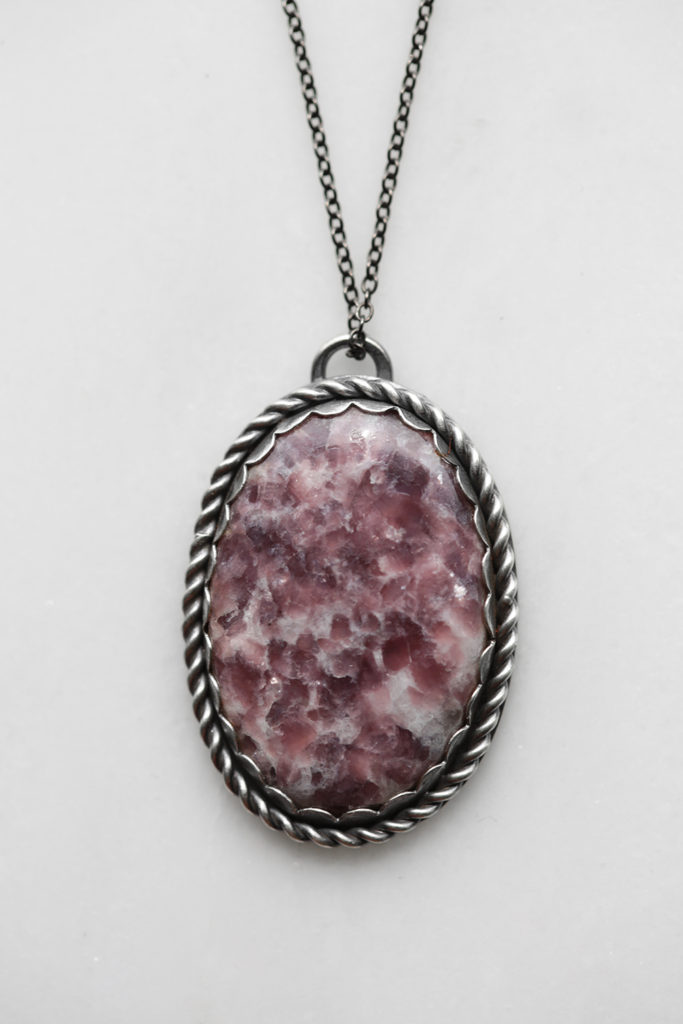
These necklaces are for those who have retained their wonder of the unknowable or the idealism of youth. For those with the wisdom to see things as they truly are, but remain unspoiled by cynicism. These necklaces are for anyone at any age whether world-weary or dew-eyed, as are Peter Beagle and lilac woods and unicorns.
“Unicorns are for beginnings,” he said, “for innocence and purity, for newness. Unicorns are for young girls.” Molly was stroking the unicorn’s throat as timidly as though she were blind. She dried her grimy tears on the white mane. “You don’t know much about unicorns,” she said.”
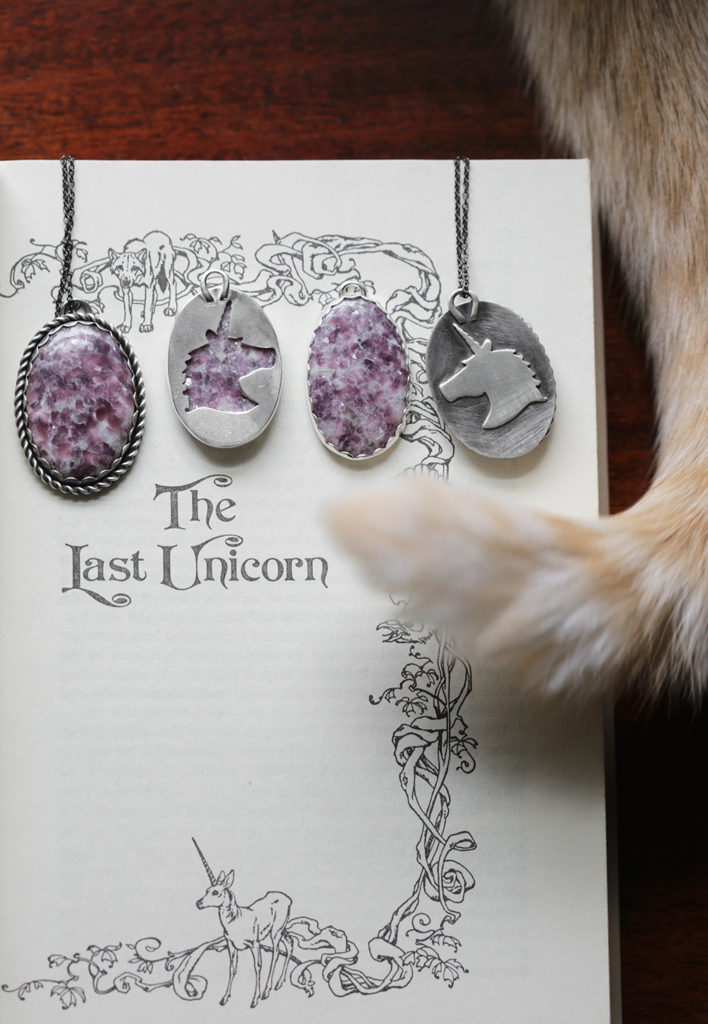
You will be able to find these pieces in the Etsy shop
on Saturday, September 9th at 7:00 p.m. EST.
See you there, fair maidens!
